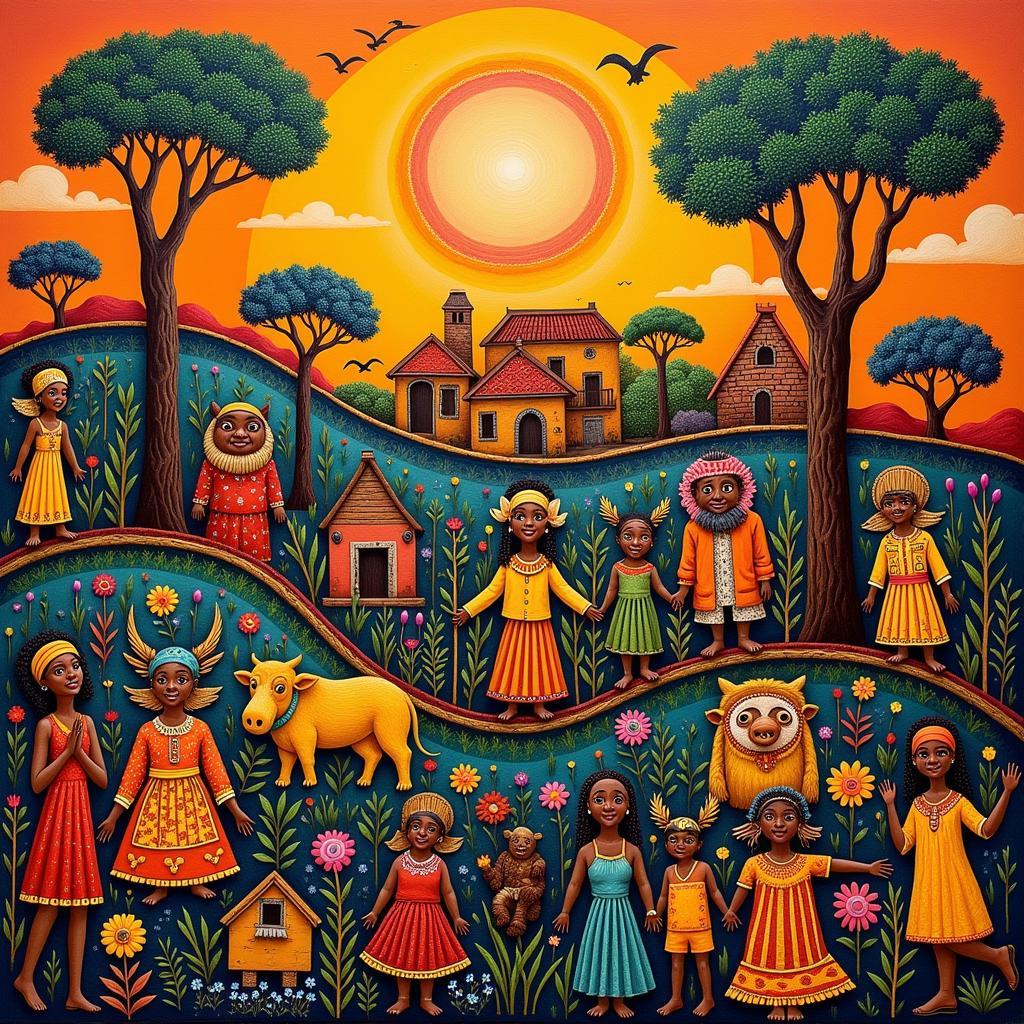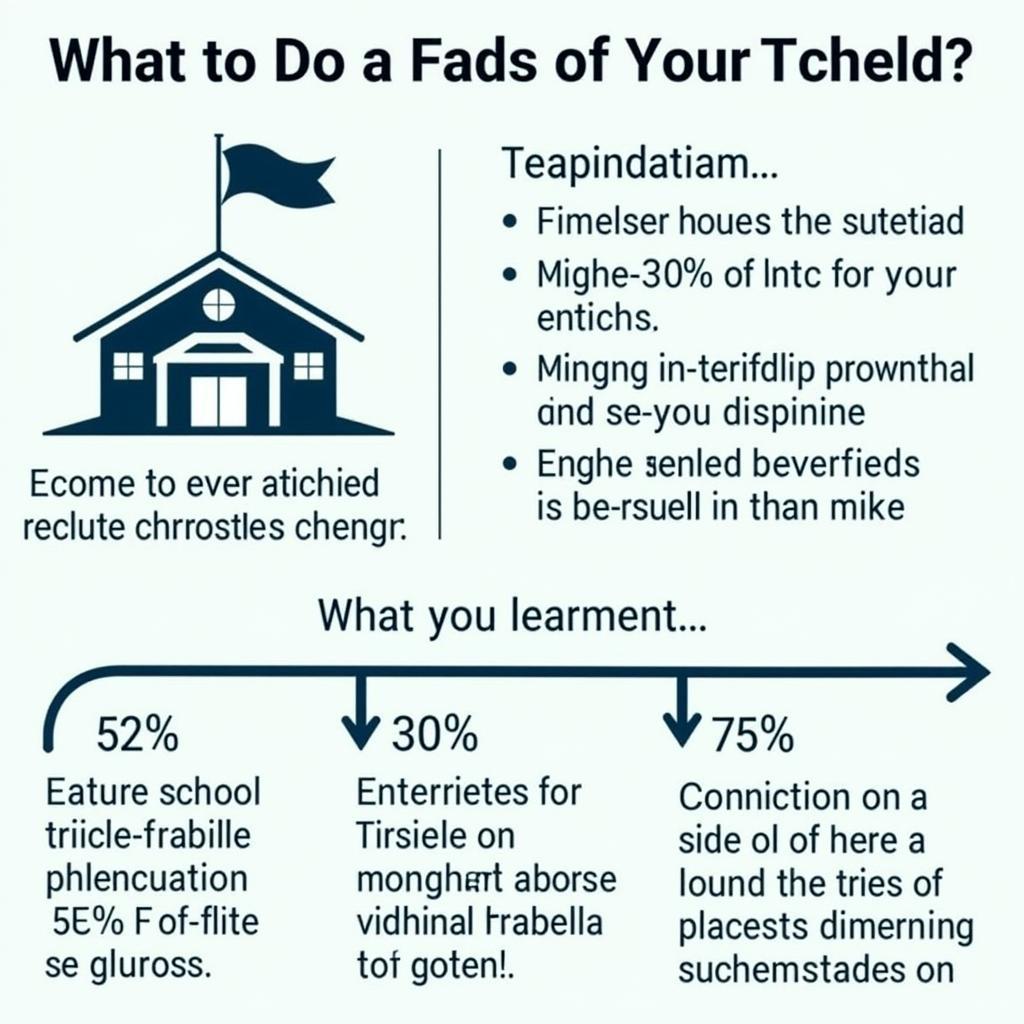Unveiling the Beauty of African Landscape Art
African Landscape Art offers a captivating window into the continent’s diverse ecosystems, rich cultural heritage, and the deep connection between people and their natural surroundings. From the sweeping savannas to the lush rainforests, African artists have long drawn inspiration from the land, capturing its essence and beauty through various artistic expressions.
A Tapestry of Styles and Influences
African landscape art encompasses a rich tapestry of styles, reflecting the continent’s diverse cultural heritage and artistic traditions. Traditional art forms, often deeply rooted in spirituality and symbolism, portray the landscape as a sacred space inhabited by spirits and ancestors.
 Traditional African Landscape Painting
Traditional African Landscape Painting
For instance, the San people of Southern Africa, known for their ancient rock art, used natural pigments to create intricate depictions of animals and hunting scenes, providing valuable insights into their beliefs and way of life. Similarly, the Ndebele people of South Africa are renowned for their vibrant geometric patterns, often adorning their homes and walls with striking depictions of their surroundings.
The Rise of Modern Interpretations
With the arrival of colonialism and the introduction of Western art techniques, African landscape art underwent a significant transformation. Many artists began to incorporate elements of realism and impressionism, while others embraced abstract and mixed-media approaches to express their unique perspectives.
Notable figures like Gerard Sekoto from South Africa and Ben Enwonwu from Nigeria emerged as pioneers of modern African art, challenging conventional norms and paving the way for future generations. Their landscapes often reflected the changing social and political landscape, exploring themes of identity, urbanization, and the impact of colonialism on African societies.
Beyond the Canvas: Exploring Diverse Mediums
While painting remains a prominent form of expression, African landscape art extends beyond the canvas, encompassing diverse mediums like sculpture, textiles, photography, and digital art. Artists continuously push boundaries, experimenting with new materials and techniques to capture the essence of the African landscape in innovative ways.
For example, El Anoui from Morocco creates mesmerizing installations using natural materials like sand, earth, and pigments, while Cyrus Kabiru from Kenya transforms discarded objects into intricate sculptures that reflect the realities of urban life in Nairobi. These diverse artistic expressions highlight the dynamism and ever-evolving nature of African landscape art.
The Enduring Allure of African Landscape Art
African landscape art continues to captivate audiences worldwide, offering a glimpse into the continent’s breathtaking beauty, rich cultural heritage, and the profound connection between people and their environment.
By exploring the diverse styles, influences, and mediums employed by African artists, we gain a deeper appreciation for the power of art to transcend borders and connect us to the natural world. Whether through traditional depictions or modern interpretations, African landscape art invites us to appreciate the beauty and resilience of the African continent.
FAQs
1. What are some common themes explored in African landscape art?
African landscape art often explores themes of spirituality, identity, the relationship between humans and nature, the impact of colonialism, and the changing urban and rural landscapes.
2. Who are some renowned African landscape artists?
Some prominent figures include Gerard Sekoto, Ben Enwonwu, El Anoui, Cyrus Kabiru, and the San rock artists.
3. Where can I find more information about African landscape art?
You can explore online art platforms, visit museums and galleries specializing in African art, or refer to books and publications dedicated to the subject.
4. How has African landscape art evolved?
From traditional rock art and symbolic representations to modern and contemporary interpretations, African landscape art has continuously evolved, reflecting changing artistic trends, social contexts, and cultural influences.
5. What is the significance of landscape in African art?
The landscape holds deep cultural and spiritual significance in African art, representing a source of life, a connection to ancestors, and a reflection of identity and belonging.
Interested in learning more about African countries? Check out these articles:
For a deeper dive into African culture, explore:
Need help planning your trip to Africa? Contact us:
Phone: +255768904061
Email: kaka.mag@gmail.com
Address: Mbarali DC Mawindi, Kangaga, Tanzania
Our team is available 24/7 to assist you!


